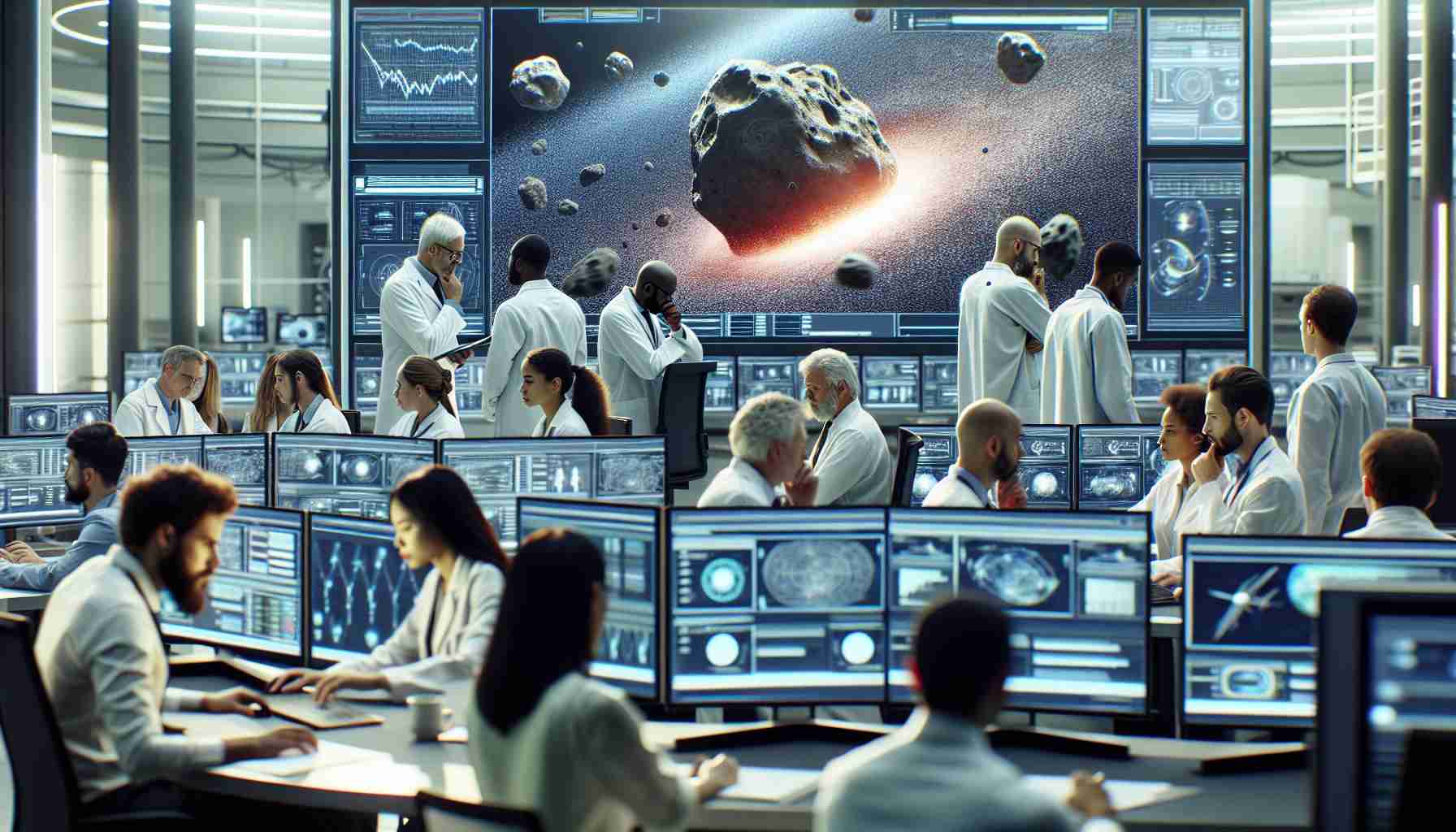- Asteroid 2024 YR4, measuring 40-100 meters, has a 1.2% chance of impacting Earth in 2032, posing localized destruction risks.
- An impact could release energy equivalent to 500 atomic bombs over a 30-kilometer radius, necessitating vigilance and preparedness.
- Initial trajectory data is uncertain due to a short 34-day observation, with more studies planned for 2028 to refine risk predictions.
- Advancements in space tracking technologies and international cooperation, including NASA and ESA efforts, are vital for defense strategies.
- While attention is required, technology and scientific efforts reduce potential asteroid impact threats, emphasizing proactive measures.
In the vast expanse of the universe, Asteroid 2024 YR4 is capturing the world’s attention with its potential close encounter with Earth in 2032. This substantial space rock, measuring between 40 and 100 meters, significantly overshadows the infamous 2013 Chelyabinsk meteorite. While its chance of impact stands at a modest 1.2%, the asteroid has earned a notable Level 3 rating on the Torino Scale, highlighting the risk of localized destruction.
The real concern lies in the catastrophic energy release an impact would unleash—equivalent to 500 atomic bombs spread across a 30-kilometer radius. Such devastation underscores the urgent need for vigilance and preparation. Discovered at Chile’s ATLAS Observatory, the asteroid’s trajectory remains shrouded in uncertainty following a fleeting 34-day observation period. However, hope shines brightly as scientists plan further extensive studies in 2028, aiming to refine its path and potential risks.
Despite the dire scenarios painted by its statistics, experts remain cautiously optimistic. The chances of impact are low, and rapid advancements in space tracking technologies are pivotal in refining our understanding and mitigating risks. From sophisticated computing models to new observation tools, technological innovations are bolstering global defense strategies. Collaborative efforts from organizations like NASA and ESA are exploring advanced solutions, including kinetic impactors, to steer hazardous asteroids away from Earth.
The key takeaway? Asteroid 2024 YR4 warrants serious attention, but it is not a harbinger of doom. Scientific vigilance, enhanced technological capacities, and international cooperation form the cornerstone of our planetary defense. As experts continue their celestial watch, the potential risk diminishes, highlighting humanity’s relentless pursuit of safety amid cosmic wonders. Stay tuned for more updates from the stars as we safeguard our world from space threats.
Asteroid 2024 YR4: Are We Ready for a Potential Cosmic Collision?
New Insights into Asteroid 2024 YR4 and Planetary Defense
Asteroid 2024 YR4 is making headlines as it inches closer to its potential close encounter with Earth in 2032. As scientists focus on refining its trajectory, several questions emerge about the broader implications and preparedness for such cosmic threats. Let’s delve into three key aspects surrounding this astronomical event.
# 1. How Are Scientists Improving Prediction Models for Asteroid Trajectories?
Recent advancements in space observation technology are revolutionizing how scientists predict asteroid trajectories. Using sophisticated computing models and advanced observation tools, researchers are able to continuously update trajectory data more accurately. Notably, organizations like NASA and ESA are investing in next-generation telescopes and AI-based prediction models that allow for real-time data analysis. These innovations are vital in minimizing uncertainty regarding asteroid paths and improving risk assessments.
# 2. What Are the Current Strategies for Mitigating the Risk of Asteroid Impacts?
The risk posed by asteroids like 2024 YR4 has prompted global organizations to explore various defensive measures. Kinetic impactors, which involve redirecting an asteroid’s course by colliding it with a spacecraft, are among the most promising solutions under consideration. Additionally, planetary radar systems are being enhanced to provide clearer images and data on approaching objects. Collaboration between space agencies worldwide is accelerating research and development in this area to ensure effective planetary defense strategies.
# 3. What Role Does International Cooperation Play in Planetary Defense?
International cooperation is essential for addressing the multifaceted challenges posed by potential asteroid impacts. Entities like NASA, ESA, and other global partners are pooling resources and expertise to develop comprehensive defense strategies. Such collaborations go beyond technology, fostering education, policy-making, and emergency preparedness on a global scale. This unified approach ensures a robust response infrastructure capable of handling any threats posed by space objects.
Relevant Links
For more information on efforts to manage asteroids and space threats:
– NASA
– ESA (European Space Agency)
Conclusion
As our understanding of Asteroid 2024 YR4 evolves, it becomes evident that while the potential threat is significant, advancements in technology, international collaboration, and proactive strategies make a catastrophic impact unlikely. Continuous scientific vigilance ensures readiness and safety in our eternal dance with the cosmos.













